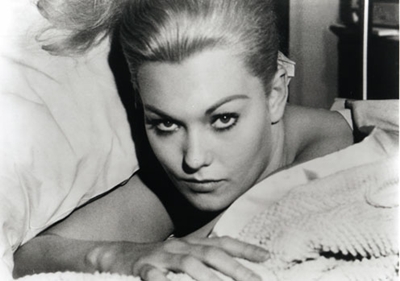
Lee Remick plays Laura Manion. Remick’s co-stars (Stewart, Scott and O’Connell) earned Oscars noms for their performances.
This month, I am giving away a copy of Criterion’s rerelease of the Otto Preminger classic “Anatomy of a Murder” from 1959. Nominated for seven Oscars, including best picture, the film features a Duke Ellington score and an all-star cast: James Stewart, Lee Remick, Ben Gazzara, Arthur O’Connell, Eve Arden and George C. Scott.
In what is arguably the best role of his career, Stewart plays a small-town Michigan lawyer defending an army lieutenant (Gazzara) accused of murdering a tavern owner, who he believes raped his wife (Remick).
As Criterion puts it: “This gripping envelope-pusher, the most popular film by Hollywood provocateur Otto Preminger, was groundbreaking for the frankness of its discussion of sex – but more than anything else it is a striking depiction of the power of words.” This two-DVD special edition is packed with special features.
 (Syd is the winner of the February reader giveaway, a DVD copy of “Notorious.” Congrats to Syd and thanks to all who entered!)
(Syd is the winner of the February reader giveaway, a DVD copy of “Notorious.” Congrats to Syd and thanks to all who entered!)
To enter the March giveaway, just leave a comment on any FNB post from March 1-31. We welcome comments, but please remember that, for the purposes of the giveaway, there is one entry per person, not per comment.
The winner will be randomly selected at the end of the month and announced in early April. Include your email address in your comment so that I can notify you if you win. Your email will not be shared. Good luck!

















From FNB readers